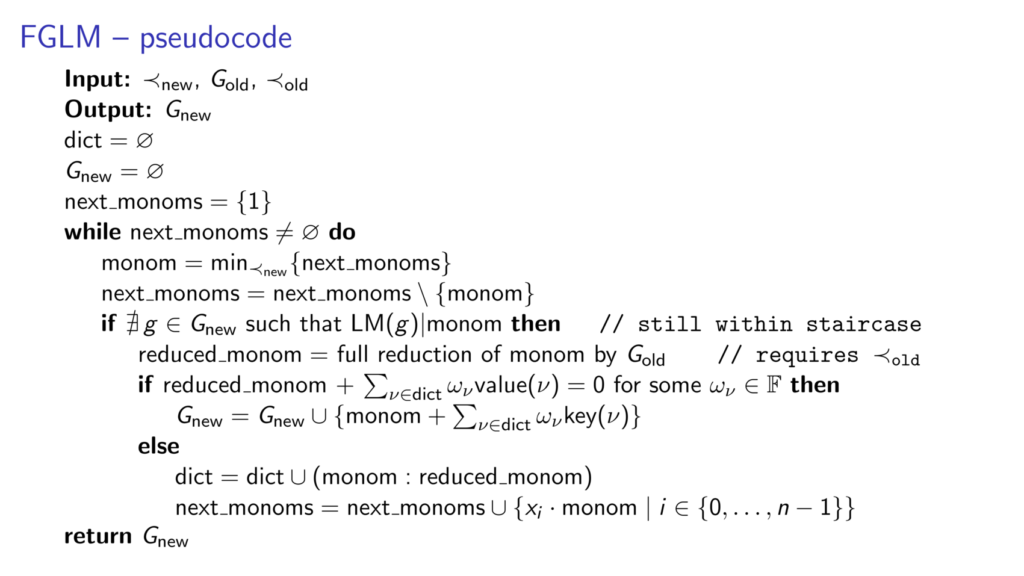F₅ – Gröbner bases using signatures

One of the biggest milestones regarding Gröbner basis computation was the introduction of F₅ due to Jean-Charles Faugère. In this video, I motivate how F₅ improves on F₄, introduce the concepts used in F₅, and present the core algorithm step by step.
There is a lot more to be said regarding signature based Gröbner basis algorithms. For example, thanks to F₅, we have a better understanding of the complexity of Gröbner basis computations. Stay tuned for upcoming posts!


